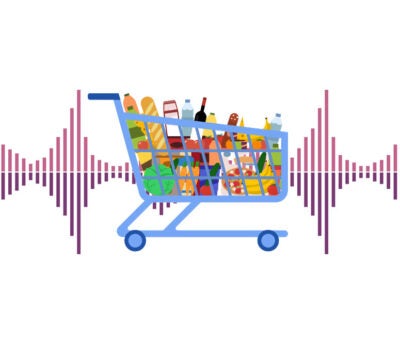In-store audio is due for a vibe shift.
Programmatic out-of-home ad company Vibenomics plans to expand its network of retail partners thanks to an infusion of investor cash. The company announced a $12.3 million Series B round on Tuesday, led by Panoramic Ventures, bringing its total funding to just over $30 million.
Vibenomics expects to grow its roster of 6,000 retail locations (just over half of which are grocery stores like Hy-Vee, Kwik Trip, Kroger and GetGo) to more than 20,000 locations by the end of 2023.
In addition to more grocery stores, convenience stores, airports and outdoor walking venues, Vibenomics is looking to add drug stores, big-box stores and liquor stores to its network, said CEO and Co-Founder Brent Oakley.
Vibenomics, which has 40 employees, also plans to increase its headcount by 25%.
“Our workforce expansion will focus on revenue-generating positions, specifically marketing and ad sales representatives,” Oakley said. “We are looking to hire people with advertising sales experience across different regions to grow our brand nationally as we expand.”
Although Vibenomics has partnerships with locations in 49 states, 90% of its employee base is in central Indiana, where the company is headquartered.
In-store audio ad tech
Vibenomics’s offering includes a media player that retailers can use to control in-store music and serve programmatic ads for in-store offers through integrations with DSPs, including The Trade Desk and Vistar Media. Vibenomics plans to add more DSP partners, Oakley said.
Ad messages can be adjusted day to day or even minute by minute, but campaigns are typically oriented around a brand’s content calendar, with tailored messages for holidays and by season.
To eliminate media waste, the tech only serves ads promoting products that can be purchased at the individual retail location, Oakley said, which makes the solution well-suited to performance marketing campaigns for consumer-packaged-goods brands. Vibenomics verifies stock-keeping units (SKUs) with its retail partners or receives information about store-specific carriage from advertisers.
“When advertisers come to us wanting to promote a specific product, we know which stores are selling it and where it sits in the store,” he said. “This is incredibly important because, according to our data, when a shopper hears an advertisement in-store, they have a 77% propensity to purchase that advertised product.”
Vibenomics partners with SafeGraph (which recently came under fire for selling abortion-related location data) for attribution. Vibenomics purchases location data from SafeGraph to tie foot traffic to hourly impressions per ad; SafeGraph is responsible for ensuring this location data is privacy-compliant, according to Vibenomics. No third-party tracking cookies are used, Oakley said.
To prove campaign effectiveness, Vibenomics works with IRI to measure incremental sales lift and return on ad spend by looking at point-of-sale data. Vibenomics also partners with Ask Suzy for market research on brand awareness, purchase intent and ad recall. And it uses the panel-based ABX Advertising Benchmark Index to determine the effectiveness of campaign creative.
Based on studies conducted over the course of 2020 and 2021, IRI found that in-store ads served by Vibenomics drive an average sales lift of 22% for the advertised item. According to Ask Suzy’s market research data, an average of 61% of consumers were “very likely” or “somewhat likely” to purchase an advertised item, with 25% unaided ad recall.















